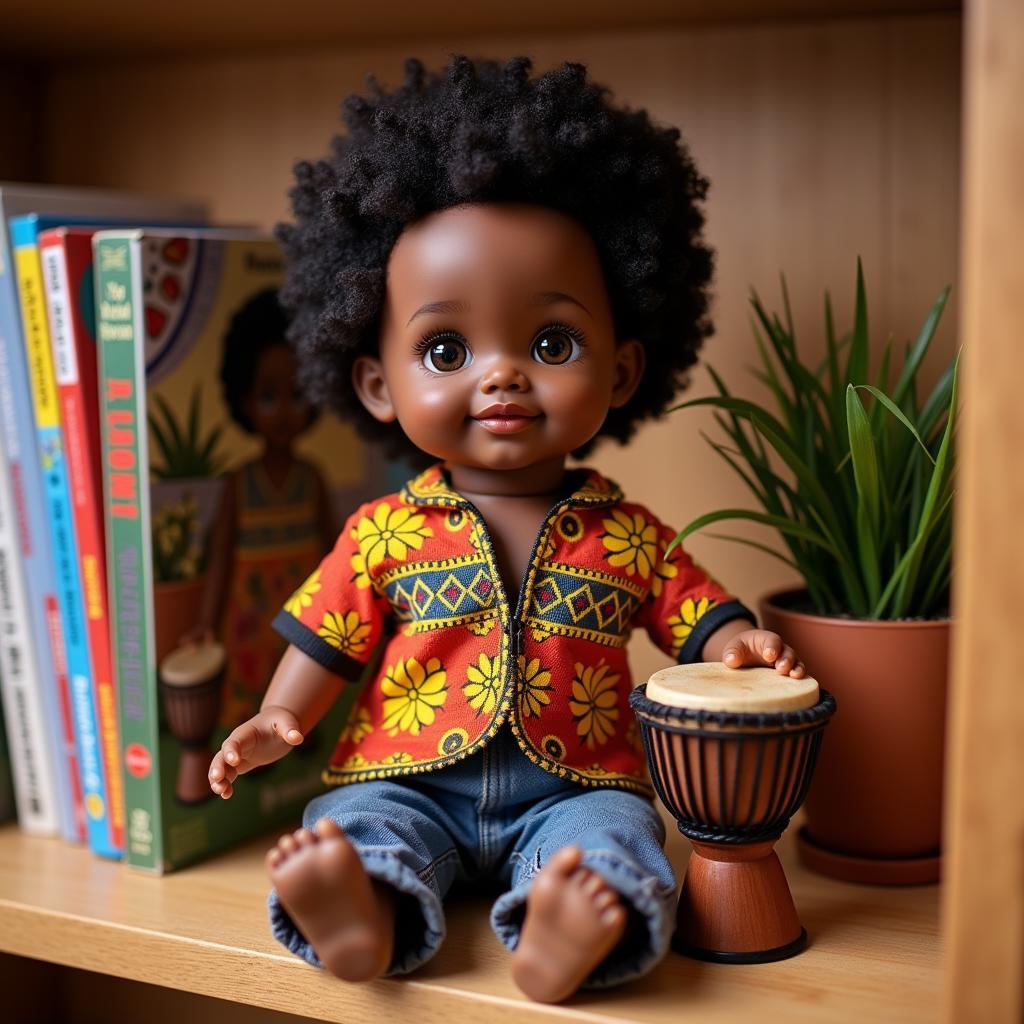African Jungle Village Life: A Glimpse into Untouched Cultures
African Jungle Village Life offers a unique window into a world often untouched by modern influences. These communities, deeply connected to their natural surroundings, maintain traditions and customs passed down through generations. From hunting and gathering practices to intricate social structures and spiritual beliefs, exploring these villages is a journey into the heart of Africa’s rich cultural heritage.
Unraveling the Rhythms of African Jungle Life
Life in an African jungle village revolves around the natural world. Many communities practice subsistence farming, cultivating crops like yams, cassava, and plantains. Hunting and gathering also play a significant role, with villagers utilizing their intimate knowledge of the forest to source food and medicinal plants. This close relationship with nature fosters a deep respect for the environment and a sustainable way of living. The rhythmic pulse of african drum beats instrumental often accompanies daily activities, adding a vibrant soundtrack to the flow of village life.
What are the primary sources of sustenance for jungle villages? Villagers rely on subsistence farming, hunting, and gathering, using their knowledge of the forest to source food and medicine.
The Significance of Community in Jungle Villages
Community is paramount in African jungle village life. Shared responsibilities, mutual support, and collective decision-making are the cornerstones of these societies. Social structures often revolve around kinship ties, with elders holding positions of authority and guiding the community with their wisdom and experience. These villages showcase the power of human connection and the strength that comes from working together. African human life revolves around community and shared experiences.
How are decisions made in jungle villages? Collective decision-making is common, often guided by the wisdom and experience of village elders.
The Spiritual and Artistic Expressions of Jungle Life
Spirituality is deeply interwoven with daily life in many African jungle villages. Traditional beliefs often center around ancestor worship, animism, and a reverence for the natural world. Rituals and ceremonies mark important life events, connecting the community to their spiritual heritage and reinforcing social bonds. Artistic expression also flourishes, with music, dance, and storytelling playing vital roles in preserving cultural traditions and passing down knowledge. African jungle music drums resonate with the spiritual heart of these communities.
What role does art play in jungle villages? Art forms like music, dance, and storytelling preserve cultural traditions and transmit knowledge across generations.
“The forest is not just our home,” explains Dr. Abimbola Oladele, a prominent anthropologist specializing in African cultures, “it’s our church, our library, our pharmacy. It is the source of our physical and spiritual sustenance.”
Facing the Challenges of the Modern World
While preserving their unique way of life, many African jungle villages also face the challenges of a rapidly changing world. Pressures from deforestation, climate change, and globalization threaten their traditional livelihoods and cultural heritage. Finding a balance between preserving their traditions and adapting to modern influences is a crucial task for these communities as they navigate the future.
What challenges do jungle villages face? Deforestation, climate change, and globalization threaten their traditional livelihoods and cultural heritage.
“The resilience and adaptability of these communities is remarkable,” notes Dr. Fatima Mohamud, a conservationist working with jungle communities in Central Africa. “They are constantly finding innovative ways to preserve their culture while addressing the challenges of the modern world.”
Conclusion: Preserving the Treasures of African Jungle Village Life
African jungle village life offers a profound insight into the diversity and richness of human culture. These communities, deeply connected to their natural surroundings and spiritual heritage, represent a vital thread in the tapestry of global cultural heritage. Understanding and supporting their efforts to preserve their unique way of life is crucial for ensuring that these treasures endure for generations to come. Let’s continue to explore and appreciate the beauty and resilience of african jungle village life.
FAQ
- What is the typical size of an African jungle village? Village size varies greatly, ranging from a few dozen to several hundred inhabitants.
- What languages are spoken in African jungle villages? A wide array of languages are spoken, often specific to a particular region or ethnic group.
- How do jungle villages access healthcare? Access to healthcare can be limited, with many villages relying on traditional healers and medicinal plants.
- What is the role of education in jungle villages? Education is increasingly recognized as important, with some villages establishing schools or partnering with external organizations.
- How can I learn more about specific African jungle villages? Numerous resources, including books, documentaries, and academic research, provide further insights into these communities.
- How can I support the preservation of African jungle village life? Supporting organizations that work with these communities on conservation, sustainable development, and cultural preservation is a meaningful way to contribute.
- What are the key characteristics of African jungle village architecture? Traditional architecture often utilizes locally sourced materials like wood, bamboo, and thatch, reflecting a harmonious relationship with the environment.
When you need assistance, please contact us at Phone Number: +255768904061, Email: kaka.mag@gmail.com or visit our address: Mbarali DC Mawindi, Kangaga, Tanzania. We have a 24/7 customer service team.

